The Butte Montmartre competes with the Eiffel Tower to be the most famous and popular tourist attraction in Paris. I therefore hesitated for quite a while before writing a post about Montmartre considering that the place was too busy with lots of tourists to have kept its charm and authenticity. Yet Montmartre is not only a major tourist attraction. It remains a very charming area with a village-like atmosphere where one can still imagine how the artists used to live, meet and work there in the end of 19th century. No doubt that strolling in Montmartre is one of the most extraordinary walks one can go for in Paris: amazing views, lovely cobbled alleys, impressive stairs, beautiful houses and gardens with trees and birds,…
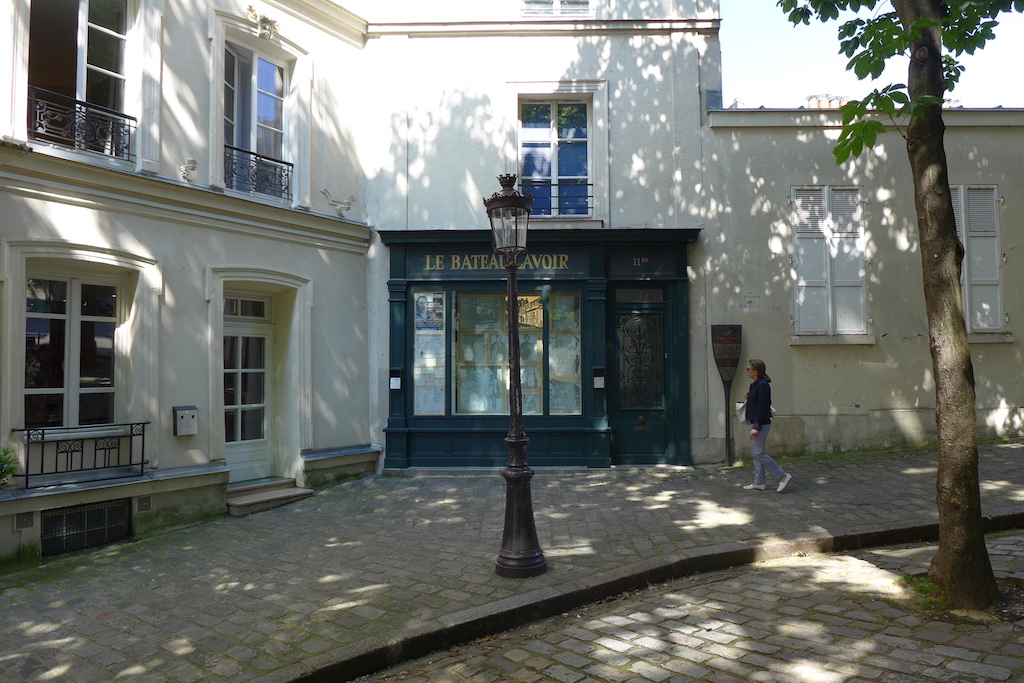
The main thing is to see rapidly crowded places such as the Place du Tertre or the Sacré Coeur and to spend a lot of time walking around unfrequented alleys, romantic squares and peaceful churches.
Here is the walk that I suggest so as to appreciate at its best the very special and magic atmosphere of Montmartre. One piece of advice: Choose comfortable shoes as most of the streets are paved and go up and down!
departure of the walk : Place des Abbesses
The walk starts on the Place des Abbesses, at the way out of the metro station Abbesses (line 12). If you arrive with the metro and even if you are in a good shape I recommend you to take the elevator to reach the street level. Indeed this station is the deepest in Paris and there are no less than 142 steps to climb: You have better save your strength to walk up and down in Montmartre!
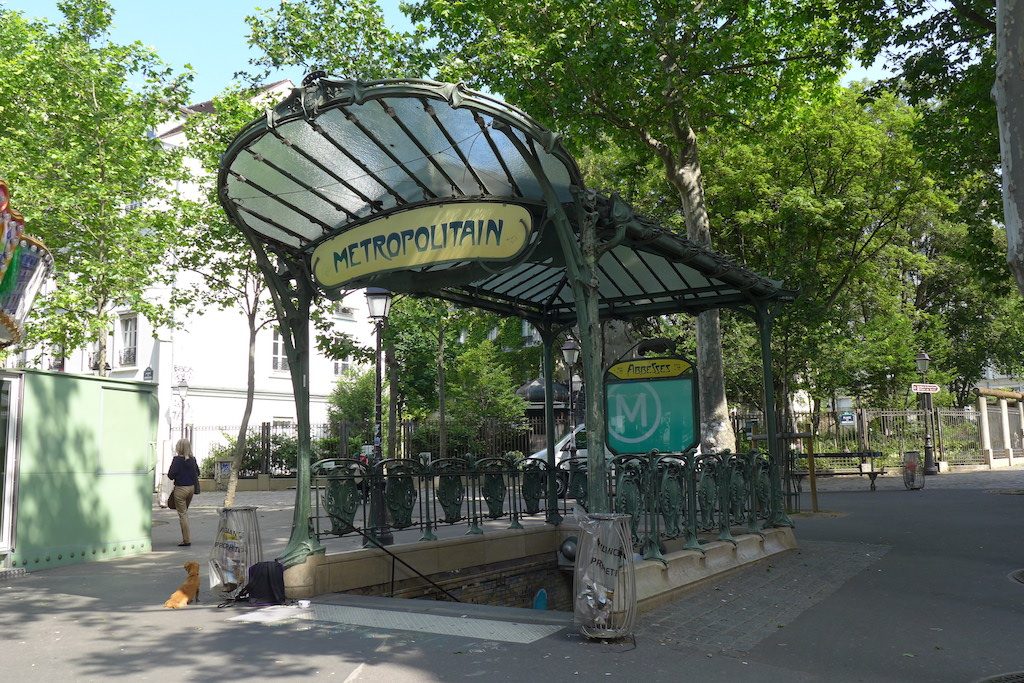
Not to be missed on the Place des Abbesses: Firstly the metro entrance, which was designed by Hector Guimard and is a masterpiece of Art Nouveau. In fact this metro entrance is not the original one but it was moved in 1974 and was initially located at the metro Hôtel de Ville: good for us!
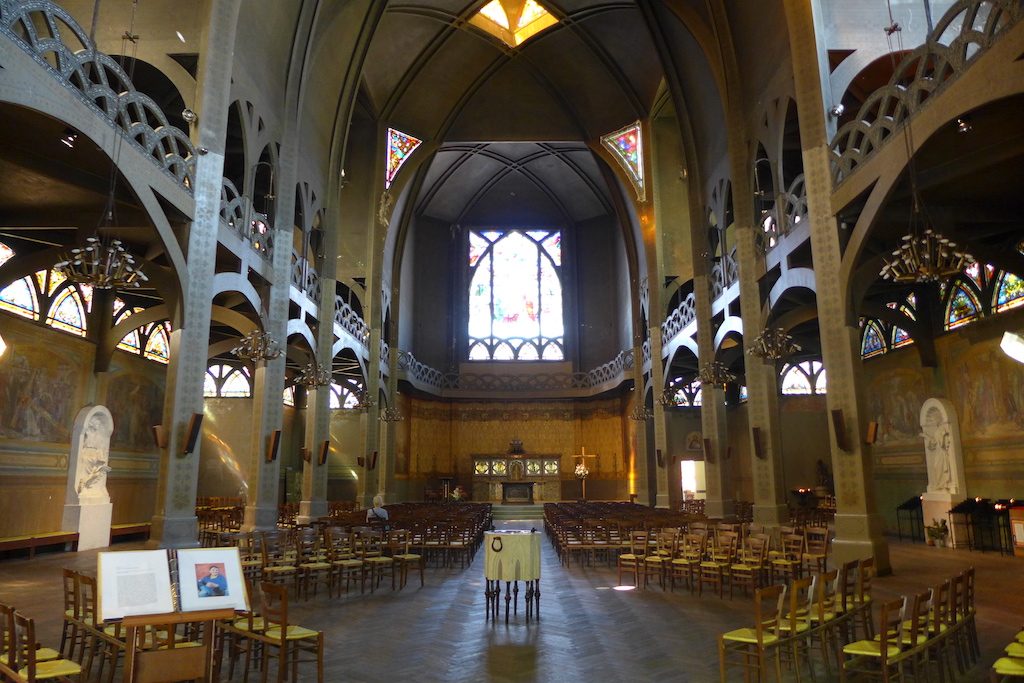
And secondly the Church Saint Jean l’Evangéliste, also called Notre Dame des Briques. This modern church was built in 1904 in reinforced concrete. I love its clean and geometric lines and its rough materials which are extremely well highlighted by the remarkable colourful modern stained glass windows and by the High Altar made of polychrome mosaics. A must-see!
Around the Rue d’orchampt
When you leave the Church walk a few steps on your left to the Rue André Antoine whose stairs offer nice views: so typical of Montmartre. Then walk up the Rue Ravignan which is in front of you towards the Place Emile Goudeau, a lovely square with trees, a Wallace fountain and further up at 11bis the Bateau Lavoir.
The Bateau Lavoir is the most famous place where artists used to live and work in Montmartre at the very beginning of 20th century: Picasso (during five years 1904-1909), Max Jacob, Pierre Mac Orlan, Modigliani, Van Dongen, Juan Gris, … The studios overlooked backwards; they were dark and not heated, but cheap! It is not the place itself but the artists who lived there that made it famous. It was destroyed by a fire in 1970 and only a shop window on the front was rebuilt to remember and imagine…
And whether for breakfast, lunch or dinner I can recommend the shaded terrace of the Restaurant ‘Le Relais de la Butte’ on the Place Emile Goudeau: good traditional French cooking, reasonable prices (two-course menu at 16€ for lunch or three-course menu at 34€ for dinner), peaceful and relaxed atmosphere and nice views: what more could you ask for?
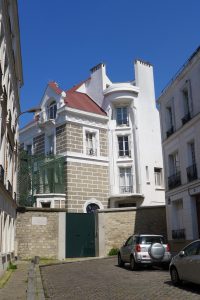
Shortly after the Bateau Lavoir on your left is the entrance of the Rue d’Orchampt: a charming cobbled alley typical of Montmartre. Take it and admire the house where the French singer Dalida used to live between 1962 and 1987: one can imagine the beautiful garden and amazing views on the city behind the high gate! At the end of the street at the crossing with the rue Lepic stands the Moulin de la Galette, another well-known place in Montmartre.
The mill which can be seen above the present restaurant ‘Le moulin de la Galette‘ is in fact the Moulin Radet, one of the two mills which used to be part of the estate of the Moulin de la Galette, an open-air dance hall with gardens and a famous local dance which was very popular at the end of 19th and beginning of 20th centuries. Everybody knows the famous painting by Auguste Renoir : ‘Le Bal du Moulin de la Galette’, made in 1876 and now exhibited in the Orsay Museum. The second mill, the real Moulin de la Galette can be seen a few meters further if you turn left in the rue Lepic, at 75 rue Lepic: on top of a hill but not open to the public.
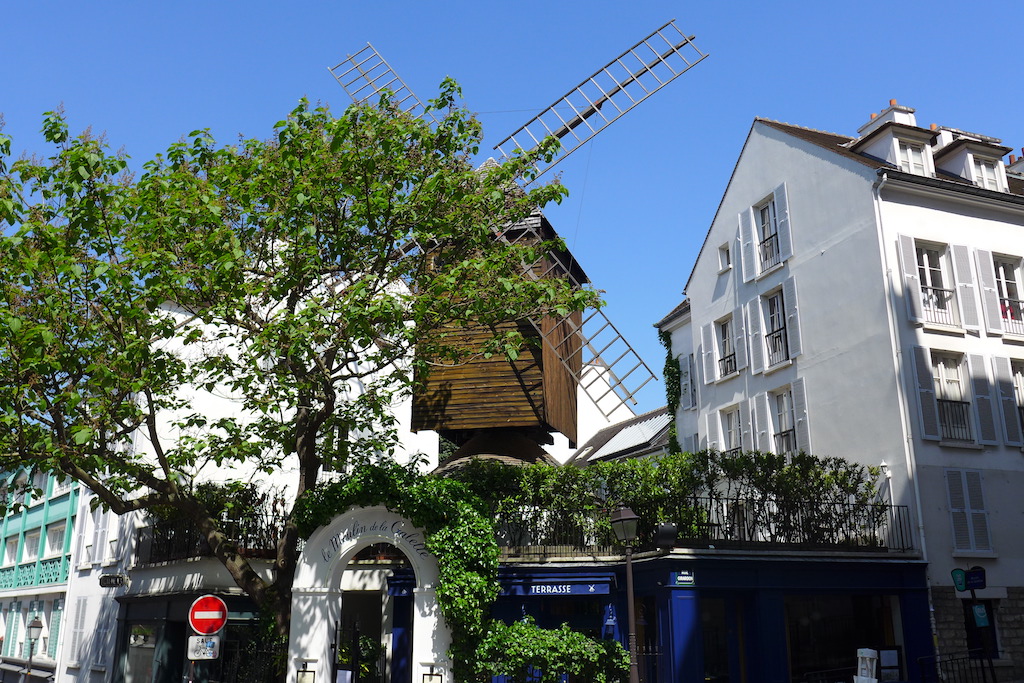
I have not tried the restaurant but been told that since its reopening last winter it is worth the visit: very good food, lovely terrace and great value for money, especially for lunch (three-course menu at 29€).
Around the Place du Tertre
Turn right in the rue Lepic to the Place Jean Baptiste Clément and keep walking straight ahead. The Place Jean Baptiste Clément is a very peaceful and charming square surrounded with lovely houses with gardens and one can hear a lot of birds singing in the trees. Enjoy this quietness… as it will not last for long: Indeed at the crossing with the rue Norvins one will be faced with lots of visitors and shops for tourists! I recommend not to turn in the rue Norvins but keep walking straight ahead in the Rue des Saules and turn in the first street on your right: the rue Sainte Rustique. It is surprising to see how quiet this alley is compared to the rue Norvins. It is the oldest street of the Village of Montmartre and it offers amazing views on the dome of the Sacré Coeur.
The rue Sainte Rustique leads into the rue du Mont Cenis, a major street in Montmartre. Turn left and walk as far as you reach the stairs and admire the beautiful view towards the North of Paris. By the way one will notice a white tower: It is the water tower of Montmartre, which is surrounded by a tiny public garden rather neglected judjing by the clumps of grass which are growing between the cobblestones. If you enter the garden and go around the water tower you will be surprised by the discovery of a nice mural painting on the bottom of it.
Retrace your steps in the rue du Mont Cenis towards the Place du Tertre. Just before reaching the famous square do not miss the beautiful Church Saint Pierre de Montmartre which is one of the oldest churches in Paris. It was built in 1133 in the Romanesque style and used to be the church of a Benedictine abbey until 1686. After having been partially destroyed and abandoned the church was restored in the early 20th century and one can nowadays admire its very elegant and harmonious inside in the Romanesque and Early Gothic style. I love the sobriety and the peace and quiet of the place and the sacred music one can hear while visiting favours meditation: a very relaxing stop… far away from the bubbling Place du Tertre!
Outside the church turn left and mingle with the crowd in the so-famous Place du Tertre: very busy and colourful, with its café and restaurant terraces in the middle and its 140 stands of 1 square meter each and each occupied by two painters working alternately. It is time for a sketch!
Around the sacre coeur
Retrace your steps towards the Sacré Coeur. One cannot miss its huge and white silhouette standing on top of the Butte Montmartre. Along with the Eiffel Tower it is one of the most world-famous pictures of Paris!
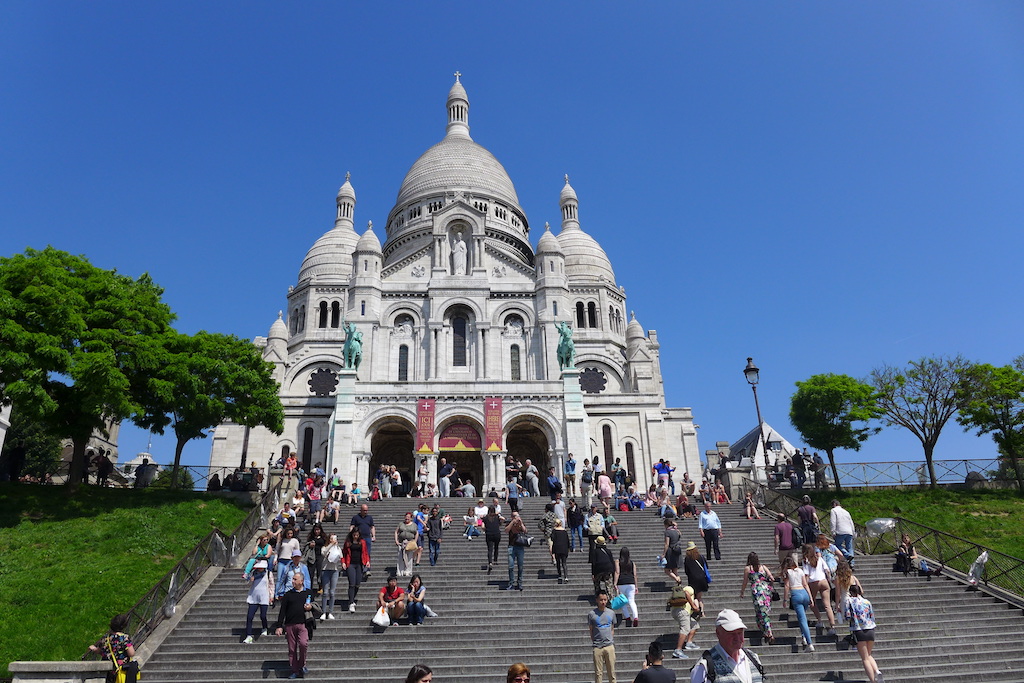
You can have a look at the inside but do not expect to find the same meditation atmosphere as in the two other churches visited previously! And do not miss the wide esplanade in front of the Sacré Coeur from where the views on Paris are amazing, especially at sunrise, at sunset or at night… and try to guess which are the monuments standing in front of you.
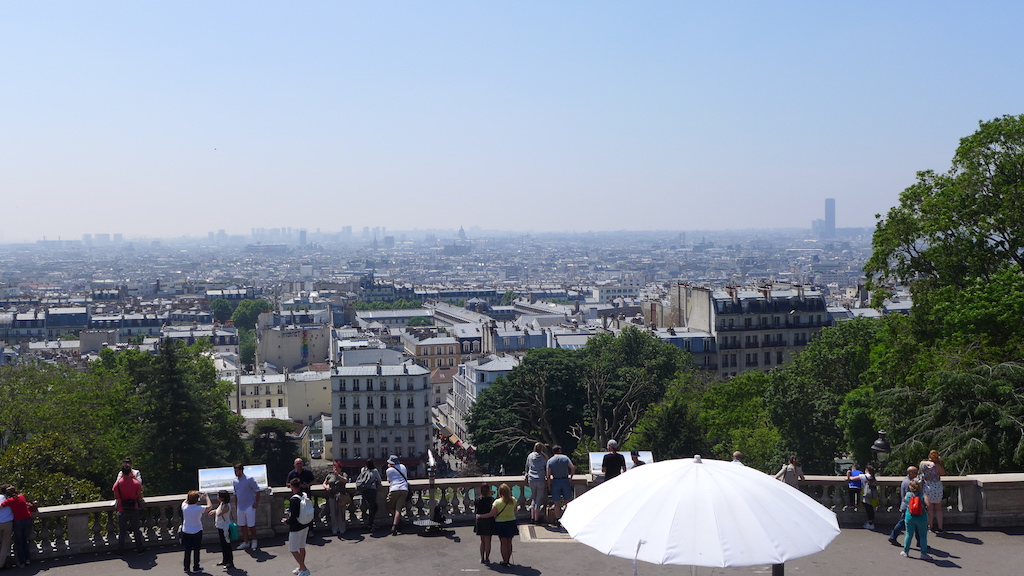
from the Dali museum to the Montmartre museum
After spending as much time as necessary to admire Paris from its top retrace your steps and cross again the Place du Tertre. Leave the square by its less busy exit, on the south-west side. Enjoy the view offered by the stairs of the Rue du Calvaire and the peaceful and old-fashioned atmosphere of the Place du Calvaire, yet so close to the Place du Tertre!
Running on from the Place du Calvaire is the rue Poulbot, one of these quiet cobbled streets typical of Montmartre. One will find there the Espace Dali and several nice restaurants away from the crowd. If you have time and wish to completely change of atmosphere, you can visit the Espace Dali: it exhibits the largest collection of artworks by Salvador Dali in France and is worth the visit. Why Dali in Montmartre? Because the artist lived there for a while in the late 20’s and 30’s; and the mills of Montmartre may have inspired him for his series of prints of Don Quichotte.
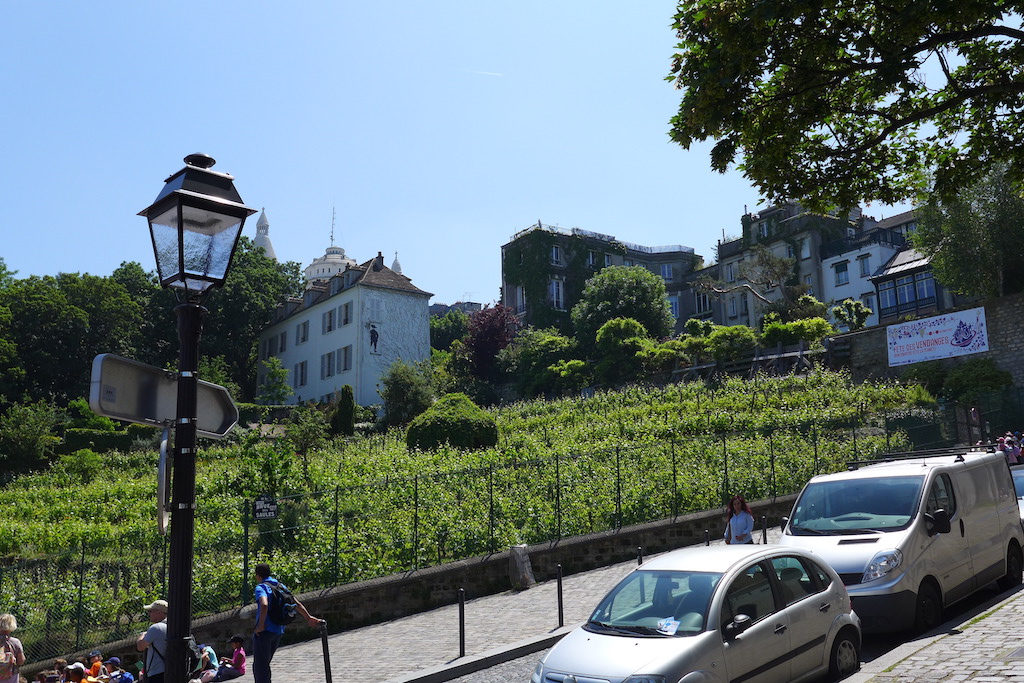
At the end of the rue Poulbot keep walking straight ahead in the rue des Saules and walk down as far as you reach the rue Saint Vincent. On your right between the rue Cortot and the rue Saint Vincent is another fame of Montmartre: the Clos Montmartre, which is the only vineyard still existing in Paris. It has been lying on 1556 square meters since 1932 and offers 27 grape varieties, mainly Gamay and Pinot. The ‘Fête des Vendanges’ which takes place every year during the second weekend of October is a very festive and picturesque event worth to attend at least once.
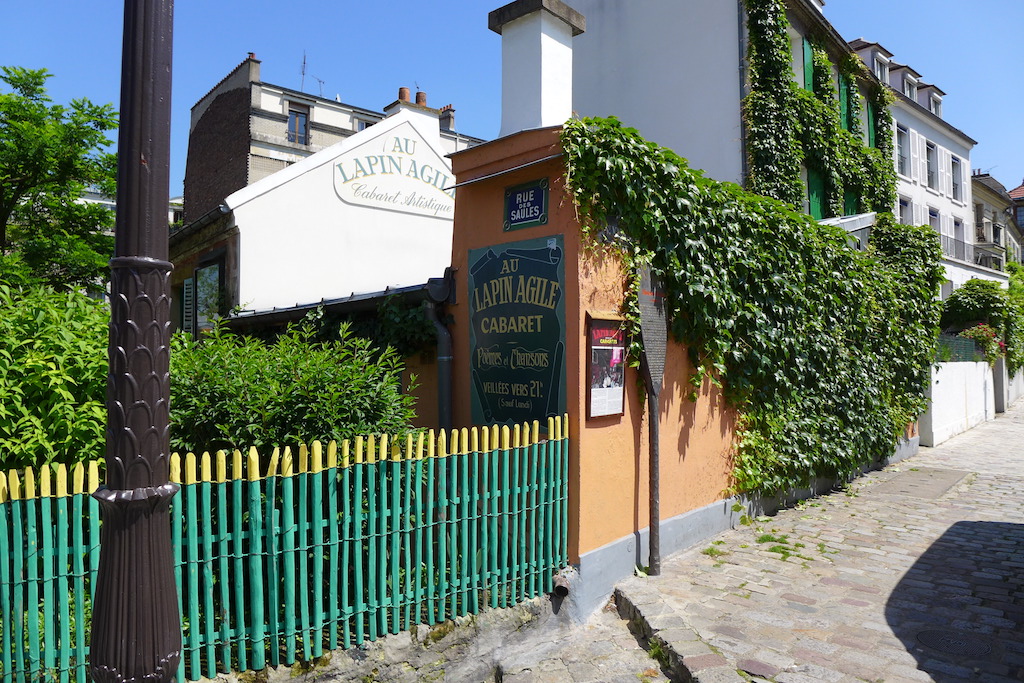
Before retracing your steps you can have a look at the Cabaret ‘Le Lapin agile’, which stands at the crossing rue Saint Vincent/rue des Saules and is another iconic place of Montmartre: is is the oldest cabaret in Montmartre where many famous artists living in the area (Picasso, Max Jacob, Mac Orlan, Apollinaire, …) used to spend a lot of time.
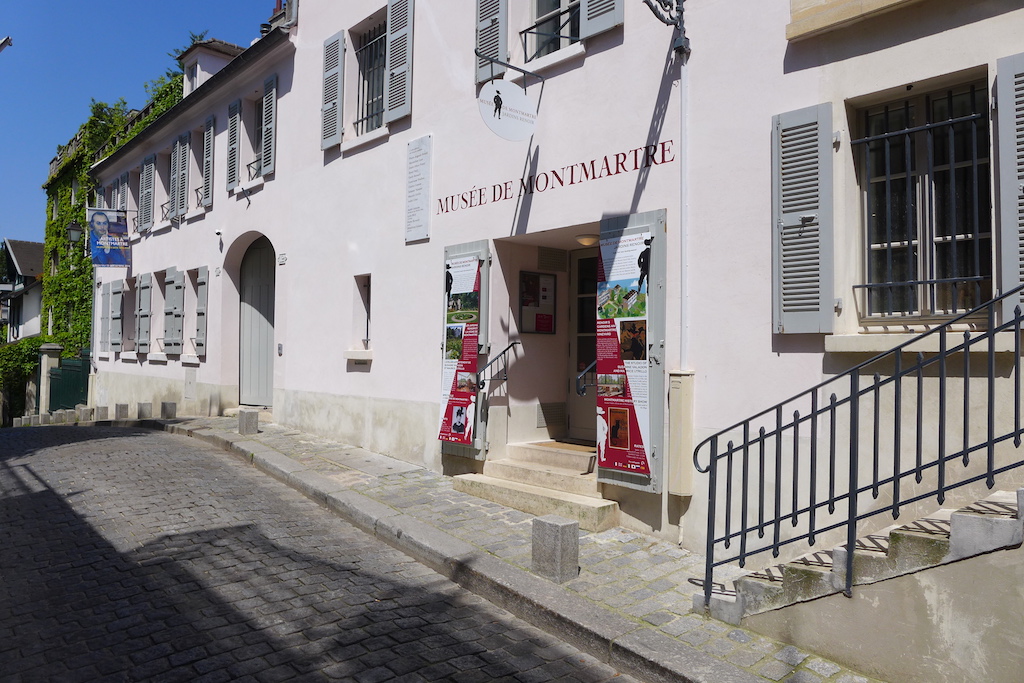
And to know more about the history of Montmartre and the vibrant artistic life in the late 19th and early 20th centuries go back up the rue des Saules and turn left in the rue Cortot. The Musée de Montmartre stands there and is THE place to visit so as to imagine the atmosphere and life in Monmartre in the past. So charming and with lovely gardens and amazing views on the vineyard and on the north of Paris!
From the rue de l’Abreuvoir to the Villa Léandre
When leaving the museum walk down the rue Cortot and always straight ahead in the rue de l’Abreuvoir and then in the narrow Allée des Brouillards. Each of these cobbled streets and alleys is more appealing than the last and one do not get tired of walking through charming houses with gardens hearing no other noise but the song of the birds.
The Allée des Brouillards leads to the rue Simon Dereure which comes out into the smartest street of Montmartre (which is also one of the smartest avenues in Paris), the Avenue Junot. Turn left and almost immediately on the right side is the entrance of the Villa Léandre, a private alley with chic charming houses.
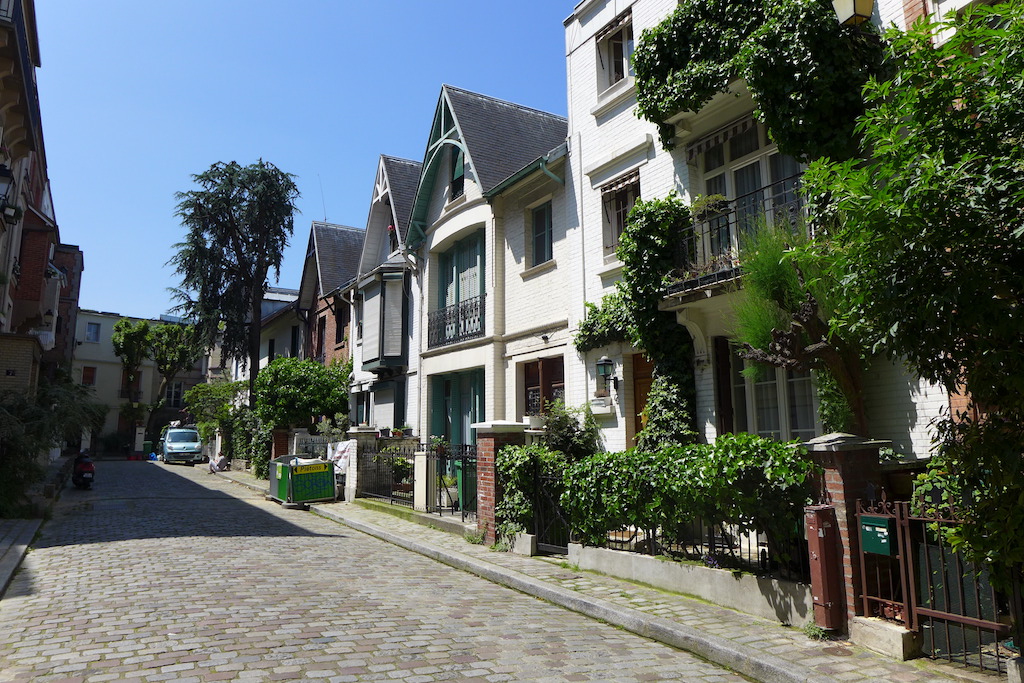
Our walk is about to end. To reach back our departure point on the Place des Abbesses keep walking down in the Avenue Junot, turn right in the rue Girardon. At the crossing with the rue Lepic you will recognize the Moulin Radet above the restaurant ‘Le Moulin de la Galette’. Take the rue d’Orchampt straight ahead to reach the Place Emile Goudeau, where the bateau Lavoir is. Go on walking down as far as you arrive on the Place des Abbesses.
The walking tour itself takes about two hours. If you plan to visit the Musée de Montmartre or the Espace Dali, or both, it could take you another hour. And do not hesitate to venture into other alleys if they attract you: there is so much to see in Montmartre that I could not take all the streets. Let me know your discoveries!
Christine Bokobza – Good Morning Paris B&B – www.goodmorningparis.fr
Practical information: Espace Dali 11 rue Poulbot 75018 Paris – Musée de Montmartre 12 rue Cortot 75018 Paris


































Can’t wait to turn this walk into an adventure
Thanks for this walking tour. We will he staying in Montmartre and added an extra day–perfect for taking this tour!
Thanks for posting this walking tour. We will he staying in Montmartre later and added an extra “free” day–perfect for time to take this tour!